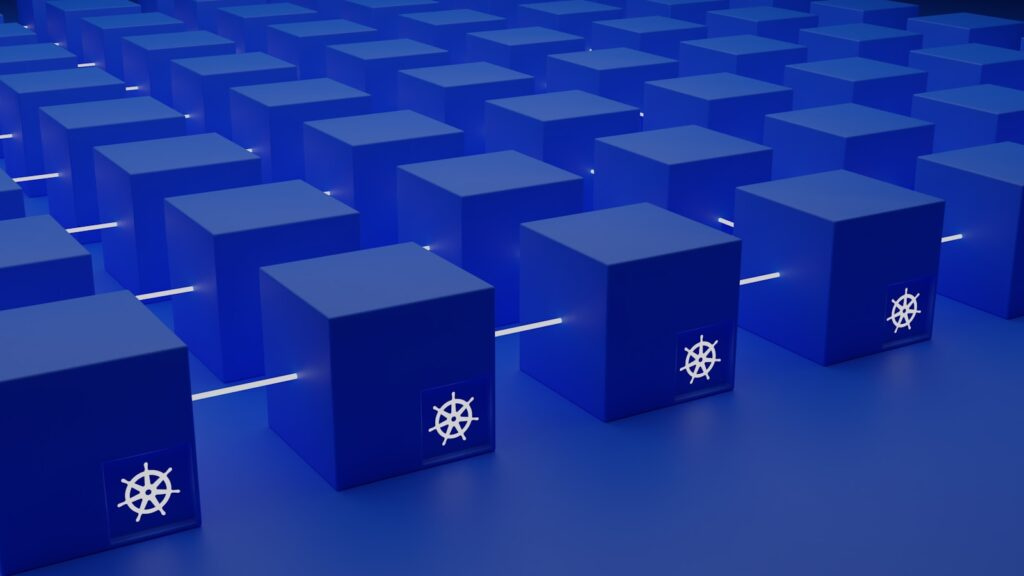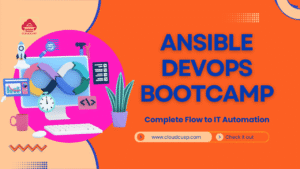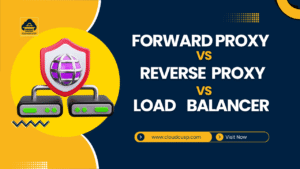Key Takeaways
- Kubernetes (often abbreviated as K8s) is an open-source platform that automates the deployment, scaling, and management of containerized applications, making it easier to handle complex software systems across multiple machines.
- Research suggests it evolved from Google’s internal tools like Borg, becoming widely adopted since its 2014 launch, and is now managed by the Cloud Native Computing Foundation (CNCF) for community-driven development.
- It seems likely that Kubernetes solves key challenges in modern app deployment, such as ensuring consistency across environments, automatic scaling based on demand, and quick recovery from failures, though its complexity can be a hurdle for beginners.
- The evidence leans toward Kubernetes being essential for cloud-agnostic setups, allowing apps to run seamlessly on any provider like AWS, Google Cloud, or even on-premises servers, without vendor lock-in.
- While powerful for large-scale operations, it’s empathetic to smaller teams too—starting simple with tools like Minikube can help anyone experiment without overwhelming infrastructure.
On This Page
Table of Contents
In simple terms, Kubernetes is like a smart conductor for a symphony of software containers. Imagine your app as a bunch of small, portable boxes (containers) that hold code, libraries, and everything needed to run. Without coordination, these boxes might crash into each other or fail under heavy use. Kubernetes steps in to organize them: it decides where each box goes, how many to create, and what to do if one breaks. Born from Google’s need to manage massive services like Search and Drive, it’s now free for anyone to use. For example, a streaming service like Netflix relies on it to handle millions of users without downtime.
The Evolution : From Clunky Hardware to Smart Automation
To appreciate Kubernetes, let’s trace how we got here. Software deployment—the act of getting your code from a developer’s laptop to users worldwide—has come a long way. In the early days, everything was tied to physical hardware, creating bottlenecks that modern tools like containers and orchestration have elegantly solved.
Back in the 1990s and early 2000s, developers wrote code on their machines, but making it live meant buying or renting a physical server. Think of it as owning a dedicated computer room: you’d install the operating system, copy your code (maybe via FTP or Git), set up databases like PostgreSQL or caches like Redis, and hope it all matched your local setup. Scaling? That involved upgrading hardware—adding more CPUs or RAM—which was expensive and time-consuming. A single crash could take your whole site down, and maintenance required a full-time expert.
Then came the cloud revolution around 2006, spearheaded by Amazon Web Services (AWS). Suddenly, anyone could spin up virtual servers (like EC2 instances) with a few clicks, paying only for what they used. This introduced cloud-native technologies: built-in load balancers, auto-scaling groups, and services like RDS for databases. Developers shifted to “renting” infrastructure, making apps more accessible. But challenges remained—replicating environments exactly was tricky, leading to inconsistencies.
Virtualization stepped up next, with tools like VMware or VirtualBox. Here, you’d create virtual machines (VMs) on a single physical server, each with its own OS. This isolated apps better and used resources efficiently, but VMs were heavy: a full OS (gigabytes in size) per app meant slow startups and wasted space.
Enter containerization in the 2010s, popularized by Docker in 2013. Containers package your app with just the essentials—code, libraries, and configs—sharing the host’s OS kernel. They’re lightweight (megabytes vs. gigabytes), portable, and consistent: “it works on my machine” became rare. For example, a web app in Node.js could run identically on a Mac dev laptop, a Linux server, or a Windows test environment.
But as apps grew complex—with microservices splitting into dozens of containers—managing them manually was chaos. Scaling, monitoring, and restarting became full-time jobs. That’s where container orchestration tools emerged, automating these tasks. Kubernetes, launched in 2014, became the gold standard, building on lessons from Google’s internal system Borg (which handled billions of tasks daily).
To visualize this progression, here’s a table comparing deployment eras:
| Era | Key Features | Pros | Cons | Example Tools/Tech |
|---|---|---|---|---|
| Physical Servers | Dedicated hardware per app | Full control, high performance | Expensive, hard to scale, manual maintenance | Bare-metal servers, static IPs |
| Cloud Servers | On-demand virtual instances | Pay-as-you-go, easy access | Environment mismatches, vendor lock-in | AWS EC2, Google Compute Engine |
| Virtualization | Multiple VMs on one physical host | Better resource use, isolation | Heavy overhead, slow provisioning | VMware, Hyper-V |
| Containerization | Lightweight app packages | Portability, consistency, fast starts | Manual management at scale | Docker, containerd |
| Orchestration | Automated container management | Auto-scaling, self-healing, cloud-agnostic | Learning curve, complexity | Kubernetes, Docker Swarm, Apache Mesos |
This evolution reflects a shift toward efficiency: from rigid hardware to flexible, automated systems. Kubernetes caps it off by making orchestration accessible, handling what used to require teams of engineers.
Diving into Kubernetes: Origins and Why It Matters
The name Kubernetes comes from the Greek word for “helmsman” or “pilot,” fitting for a tool that steers your app through stormy seas of traffic and failures. Its logo—a ship’s wheel—nods to this. Google engineers, drawing from 15 years running Borg (and later Omega), open-sourced Kubernetes in 2014. It wasn’t a direct copy of Borg but a fresh build inspired by it, donated to CNCF in 2015 for neutral governance.
Why learn Kubernetes? In a world of distributed apps, it ensures reliability. For instance, an e-commerce site during Black Friday might see traffic spikes—Kubernetes automatically adds containers and balances loads. It’s cloud-agnostic: write once, deploy anywhere, avoiding lock-in to providers like AWS’s ECS. Stats show over 50% of Fortune 500 companies use it, boosting DevOps efficiency and cutting costs through better resource use.
Benefits include:
- Service discovery and load balancing: Apps find each other via DNS, with traffic spread evenly.
- Storage orchestration: Auto-mount volumes from local drives or cloud providers.
- Automated rollouts/rollbacks: Update apps gradually; revert if issues arise.
- Self-healing: Restart failed containers, kill unresponsive ones.
- Horizontal scaling: Add/remove replicas based on CPU/memory metrics.
- Secret management: Store passwords securely without exposing them in code.
It’s not a full PaaS like Heroku—Kubernetes focuses on containers, leaving app builds and middleware to you. It supports diverse workloads: stateless web apps, stateful databases, or batch jobs like data processing.
Kubernetes Architecture
At its core, Kubernetes runs as a cluster—a group of machines working together. The control plane (master) oversees everything, while worker nodes handle the actual work. Let’s break it down simply, like a factory: the control plane is the manager’s office, nodes are assembly lines.
Control Plane Components (run on one or more master nodes for reliability):
- API Server (kube-apiserver): The entry point. You send commands here (via tools like kubectl), and it validates/authenticates them before acting.
- etcd: A distributed key-value store (like a simple database) that holds the cluster’s state—desired configs, current statuses.
- Scheduler (kube-scheduler): Watches for new tasks and assigns them to nodes based on resources, affinities (e.g., “run near this database”), or constraints.
- Controller Manager (kube-controller-manager): Runs loops that reconcile desired vs. actual states. Includes node controller (handles down nodes), deployment controller (manages rollouts), and more.
- Cloud Controller Manager (cloud-controller-manager): Optional for cloud setups; interfaces with provider APIs for things like load balancers.
Node Components (run on every worker):
- Kubelet: The agent ensuring containers run as specified. It communicates with the control plane and manages pod lifecycles.
- Kube-Proxy: Handles networking—sets up rules for service discovery and load balancing within the cluster.
- Container Runtime: The engine running containers, like containerd, CRI-O, or Docker. It follows the Container Runtime Interface (CRI) for compatibility.
Here’s a table of core components and their roles:
| Component | Location | Role | Analogy |
|---|---|---|---|
| API Server | Control Plane | Handles all requests, authenticates users | Front desk receptionist |
| etcd | Control Plane | Stores cluster data persistently | Filing cabinet for records |
| Scheduler | Control Plane | Assigns workloads to nodes | HR assigning employees to teams |
| Controller Manager | Control Plane | Maintains desired state (e.g., scaling, healing) | Supervisor fixing issues |
| Kubelet | Worker Node | Runs and monitors pods on the node | Factory floor worker |
| Kube-Proxy | Worker Node | Manages network traffic and services | Traffic cop directing flow |
| Container Runtime | Worker Node | Executes containers | Engine powering the machines |
How it flows: You define a Deployment (a blueprint for your app) in YAML, submit via API. The controller creates Pods (smallest units, usually one container each). Scheduler places them on nodes. Kubelet starts them, kube-proxy routes traffic. If a pod fails, controllers restart it. For networking, add-ons like Calico or Flannel handle pod-to-pod communication.
Example: Scaling a web app. Suppose you have a simple Nginx server. Here’s a basic YAML deployment (coding example—copy-paste into a file and run kubectl apply -f file.yaml):
apiVersion: apps/v1
kind: Deployment
metadata:
name: my-nginx
spec:
replicas: 3 # Run 3 copies
selector:
matchLabels:
app: nginx
template:
metadata:
labels:
app: nginx
spec:
containers:
- name: nginx
image: nginx:latest # Pull from Docker Hub
ports:
- containerPort: 80This creates three pods running Nginx. To expose it: Add a Service YAML for load balancing.
In practice, tools like Helm (package manager) simplify this, or managed services like EKS (AWS), GKE (Google), or AKS (Azure) handle cluster setup.
Examples and Getting Started
Take Spotify: They use Kubernetes to manage thousands of services, auto-scaling podcasts during peaks. Or Pokémon GO, which handled launch traffic surges without melting down.
To learn: Start with Minikube (local cluster) or Kind for testing. Install kubectl (command-line tool). Tutorials on kubernetes.io guide you through basics. For advanced, explore Operators for custom automation or Istio for service mesh.
Challenges? Steep curve—focus on fundamentals first. Communities like Reddit’s r/kubernetes help.
In summary, Kubernetes transforms deployment from a chore to a superpower, enabling resilient, scalable apps.

FAQs
What is Kubernetes?
It’s like a smart manager for apps that run in containers. Instead of manually starting and fixing them, it automates everything to keep your app running smoothly, no matter how big it gets. Tip: Think of it as the traffic cop for a busy city of apps—directing where they go and fixing jams.
Why do people use Kubernetes?
It saves time by automatically growing or shrinking your app based on user demand, restarts crashed parts without you noticing, and works on any cloud or computer. Tip: Great for online shops during sales rushes—adds more “servers” instantly.
What’s the difference between a container and a pod?
A container is a single box holding your app and its tools; a pod is a group of those boxes that share space and chat easily. Tip: Pods are Kubernetes’ way of teaming up containers for bigger jobs.
How does Kubernetes work with Docker?
Docker makes the containers; Kubernetes arranges and watches them like a stage director. Tip: Docker builds the Lego pieces; Kubernetes assembles the castle.
What is K8s?
Just a shortcut for Kubernetes—K for the start, 8 for the letters in between, S for the end. Tip: Saves time in chats, like saying “iPhone” instead of spelling it out.
How can I try Kubernetes on my own computer?
Use a tool called Minikube to set up a mini version right on your laptop for testing. Tip: Perfect for practicing without needing a big setup.
What are the main parts of Kubernetes?
It has a “control center” (like the boss’s office) that plans everything, and “worker machines” that do the actual app running. Tip: The control center watches and adjusts; workers handle the heavy lifting.
What does “container orchestration” mean?
It’s the automatic way of starting, connecting, and balancing many containers so your app doesn’t crash under pressure. Tip: Like a DJ mixing tracks—keeps the party (your app) flowing without skips.







